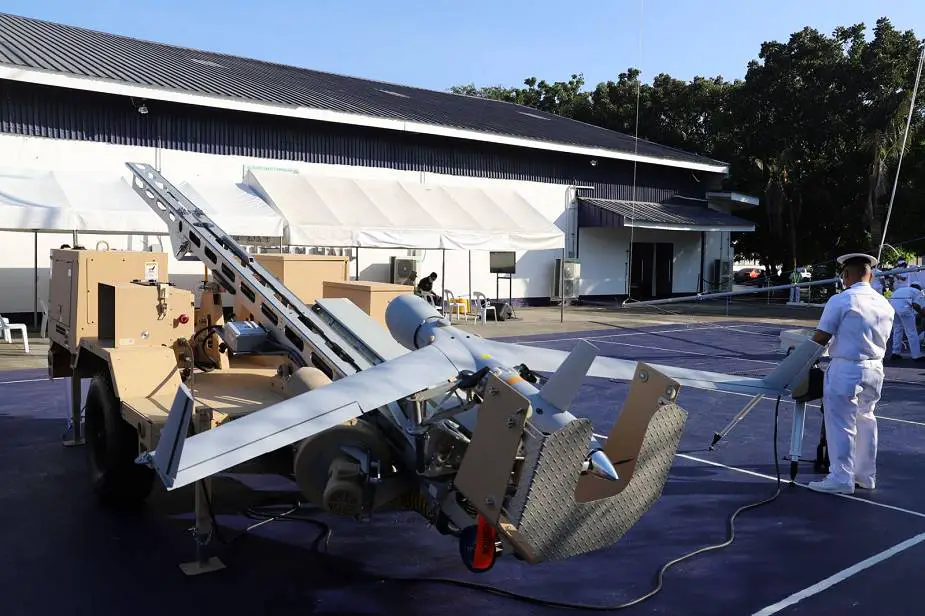Breaking news
Philippine Navy receives American-made ScanEagle UAS Unmanned Aerial Systems.
According to a press release published by the U.S. Embassy in the Philippines on November 25, 2020, the Philippine Navy receives its first-ever, advanced fixed-wing unmanned aerial system (UAS) ScanEagle. It was acquired through the Maritime Security Initiative Program of the United States. Acting Deputy Chief of Mission Kelly from the U.S. Embassy in the Philippines and JUSMAG (Joint U.S. Military Assistance Group) officials delivered this Php710-million ($14.79 million) system to the Philippine Navy to increase the Armed Forces of the Philippines (AFP)’s maritime domain awareness and border security capabilities.
Follow Navy Recognition on Google News at this link
 American-made ScanEagle UAS Unmanned Aerial System for Philippine Navy. (Picture source Twitter account Philippine Navy)
American-made ScanEagle UAS Unmanned Aerial System for Philippine Navy. (Picture source Twitter account Philippine Navy)
The ScanEagle UAS will provide intelligence, surveillance, and reconnaissance (ISR) capabilities to the AFP (Armed Forces of the Philippines) 71st Maritime Unmanned Aerial Reconnaissance Squadron (71 MUARS) of the Philippine Fleet’s Naval Air Wing, which will operate the aircraft out of Naval Station Leovigildo Gantioqui, San Antonio, Zambales. 71 MUARS is the AFP’s leading unit for unmanned maritime ISR operations.
The United States provides the AFP with grant assistance and expedited sales of arms and munitions to support its modernization goals and urgent maritime security, counterterrorism and humanitarian assistance and disaster relief requirements.
The Philippines is by far the largest recipient of U.S. military assistance in the Indo-Pacific region. Since 2015, the United States has delivered more than Php33 billion ($650 million) worth of planes, ships, armored vehicles, small arms, and other military equipment to the Philippines, while training side-by-side with our Filipino allies.
The ScanEagle is a long-endurance unmanned aerial system (UAS) designed and manufactured by Insitu Inc., a wholly-owned subsidiary of The Boeing Company.
Citing the Naval-Technology website, the ScanEagle air vehicle is composed of five field-replaceable major modules: nose, fuselage, avionics, wings and the propulsion system. It has a cylindrical fuselage of 200cm diameter with mid-mounted swept-back wings with winglets (wingspan – 3.1m), tail endplate fins and steering rudders.
The ScanEagle carries a stabilized electro-optical and/or infrared camera on a lightweight inertial stabilized turret system, and an integrated communications system having a range of over 100 km. It has a flight endurance of over 20 hours.
The ScanEagle has a 3.1 m wingspan, a length of 1.4 m, a weight of 20 kg and can fly at a speed up to 150 km/h, with an average cruising speed of 89 km/h. Block D aircraft featured a higher-resolution camera, a custom-designed Mode C transponder and a new video system. A Block D aircraft, flying at Boeing's test range in Boardman, Oregon, set a type endurance record of 22 hours, 8 minutes.





























